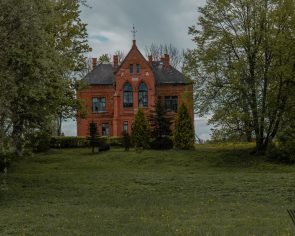Cirstu Manor
Although it is a private property and can only be viewed from the outside, the castle of Cirstu Manor is well preserved and can be viewed while passing by, while respecting the owners’ privacy.
The landscape part of the manor park and complex with a small alley has been preserved, the Ogre river flows along the territory.
Cirstu manor was mentioned in historical sources as early as 1544, when it belonged to the Tisenhausen family. For a while, its owner was also the Latvian Johans Franks, whose father Ansis Franks was a Piebalga farmer. He received several farmsteads for faithful service in the Swedish army in the middle of the 17th century. Out of these farmsteads, Vāckalns manor was formed.
The prosperity of Cirstu manor is associated with the 19th century. The grandeur of the manor is evidenced by the cattle complex with a paved inner yard so that the cattle do not have to trudge through the mud. There was also a granary, an ice cellar, a laundry house, and a beer cellar. One of the paving stones in the yard was in the shape of a heart.
The manors belonged to the Latvian state after the agrarian reform. So, a school was established in the manor house, and Cirsti Parish Hall also operated there. After the Second World War, it was like a small center where films were shown in a cinema, a club and a post office operated, as well as a shop, but later the house was divided into apartments, and unnecessary partitions were built in it.
The manor castle was built in 1886 in the neo-gothic style. The banker Magnus Friedrich Arvids von Strandmanis intended it as a guesthouse where meetings could be held from time to time. The facade of the house is decorated with the coat of arms of the family. A hexagonal neo-Gothic tower was also built next to the castle. In 1905, the manor house was burned down and restored only from 1929 to 1937, when a school was built there.


Working time
Outside space is always available.

